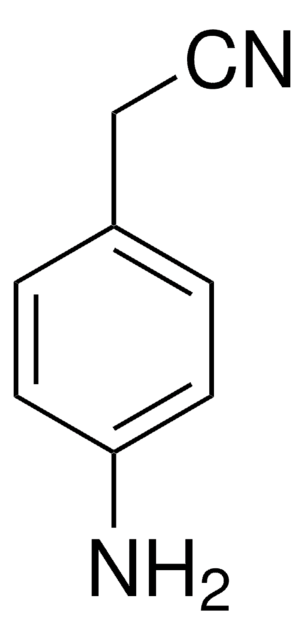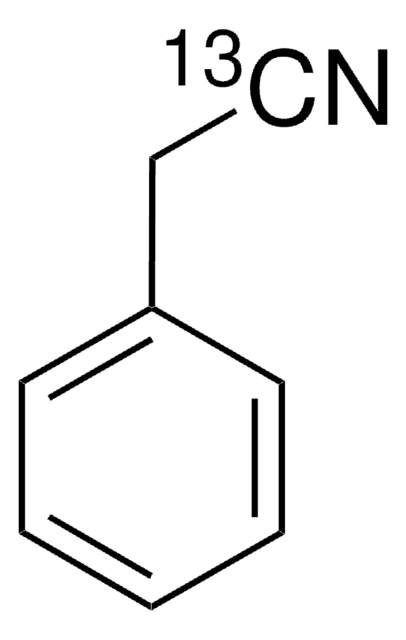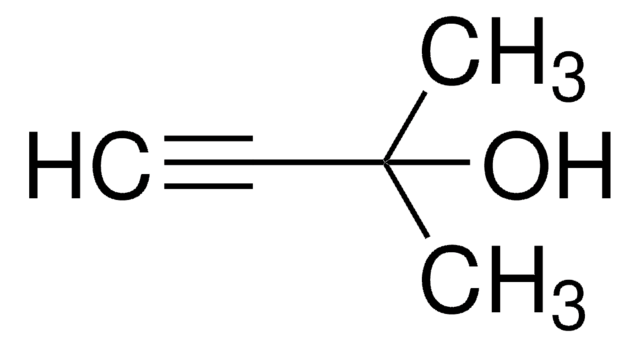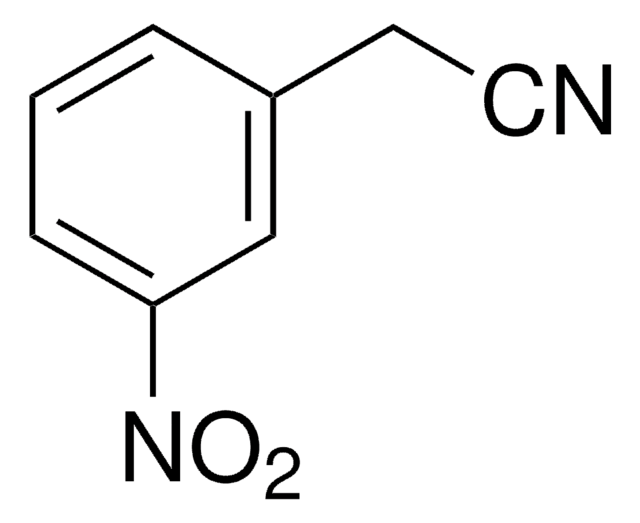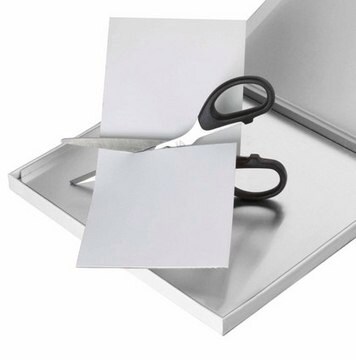12608
Benzyl cyanide
analytical standard
Sinônimo(s):
Benzyl nitrile, Phenylacetonitrile
About This Item
Produtos recomendados
grau
analytical standard
Nível de qualidade
pressão de vapor
0.1 mmHg ( 20 °C)
Ensaio
≥98.0% (GC)
prazo de validade
limited shelf life, expiry date on the label
índice de refração
n20/D 1.520-1.526
n20/D 1.523 (lit.)
pb
233-234 °C (lit.)
pf
−24 °C (lit.)
densidade
1.015 g/mL at 25 °C (lit.)
aplicação(ões)
cleaning products
cosmetics
environmental
flavors and fragrances
food and beverages
personal care
formato
neat
cadeia de caracteres SMILES
N#CCc1ccccc1
InChI
1S/C8H7N/c9-7-6-8-4-2-1-3-5-8/h1-5H,6H2
chave InChI
SUSQOBVLVYHIEX-UHFFFAOYSA-N
Procurando produtos similares? Visita Guia de comparação de produtos
Categorias relacionadas
Descrição geral
Aplicação
Produtos recomendados
Palavra indicadora
Danger
Frases de perigo
Declarações de precaução
Classificações de perigo
Acute Tox. 1 Inhalation - Acute Tox. 3 Dermal - Acute Tox. 3 Oral
Código de classe de armazenamento
6.1A - Combustible acute toxic Cat. 1 and 2 / very toxic hazardous materials
Classe de risco de água (WGK)
WGK 2
Ponto de fulgor (°F)
215.6 °F - closed cup
Ponto de fulgor (°C)
102 °C - closed cup
Escolha uma das versões mais recentes:
Já possui este produto?
Encontre a documentação dos produtos que você adquiriu recentemente na biblioteca de documentos.
Nossa equipe de cientistas tem experiência em todas as áreas de pesquisa, incluindo Life Sciences, ciência de materiais, síntese química, cromatografia, química analítica e muitas outras.
Entre em contato com a assistência técnica

